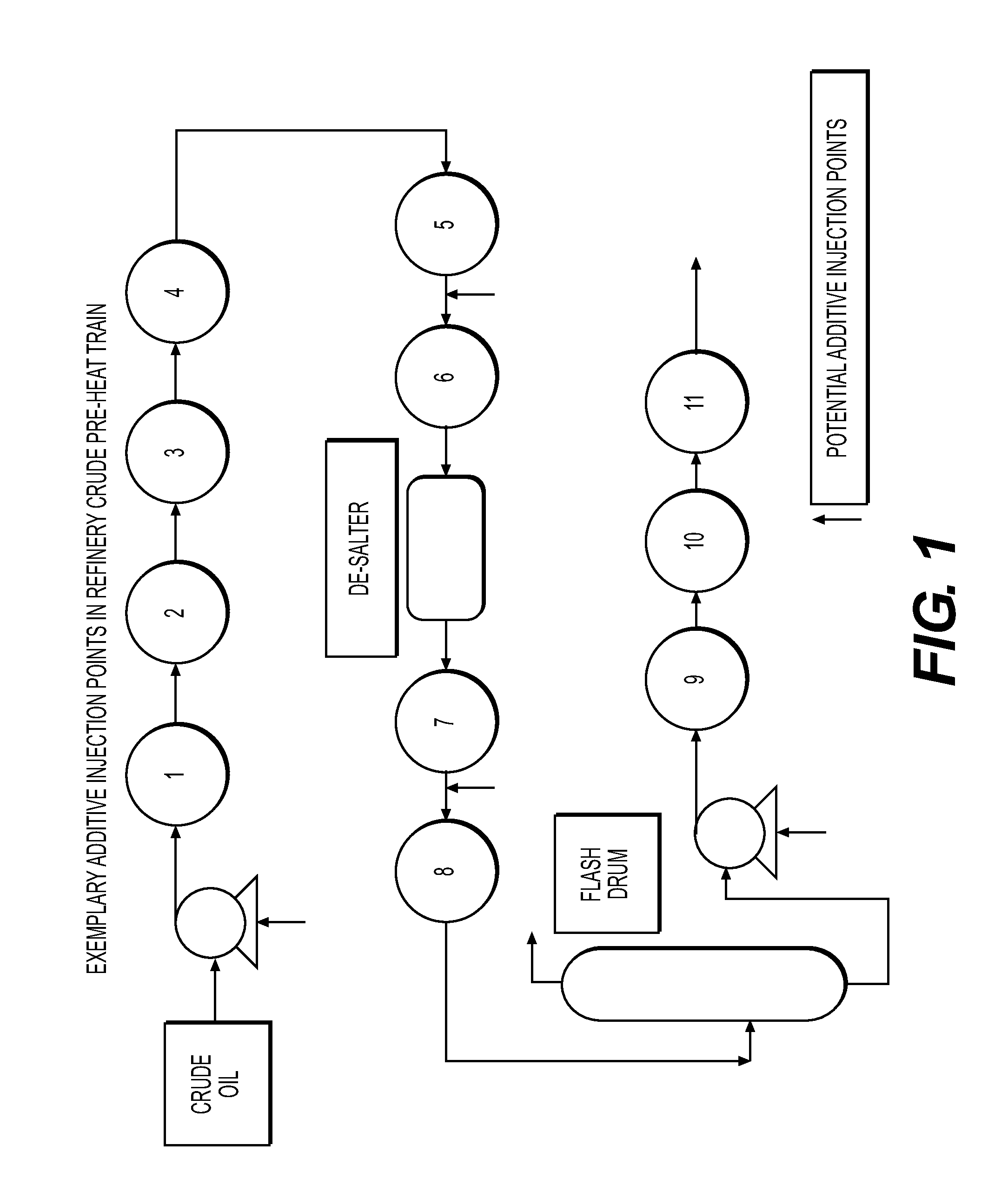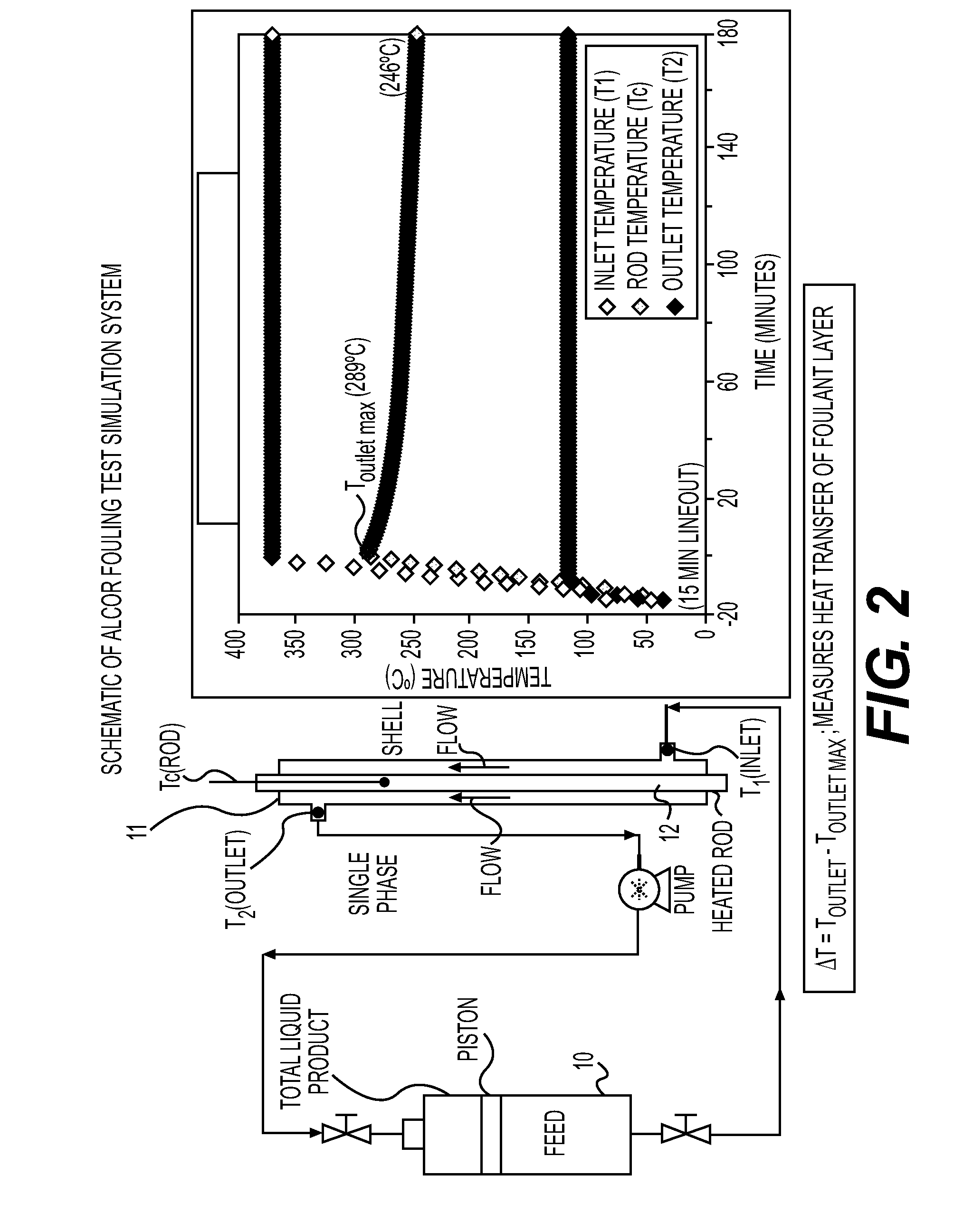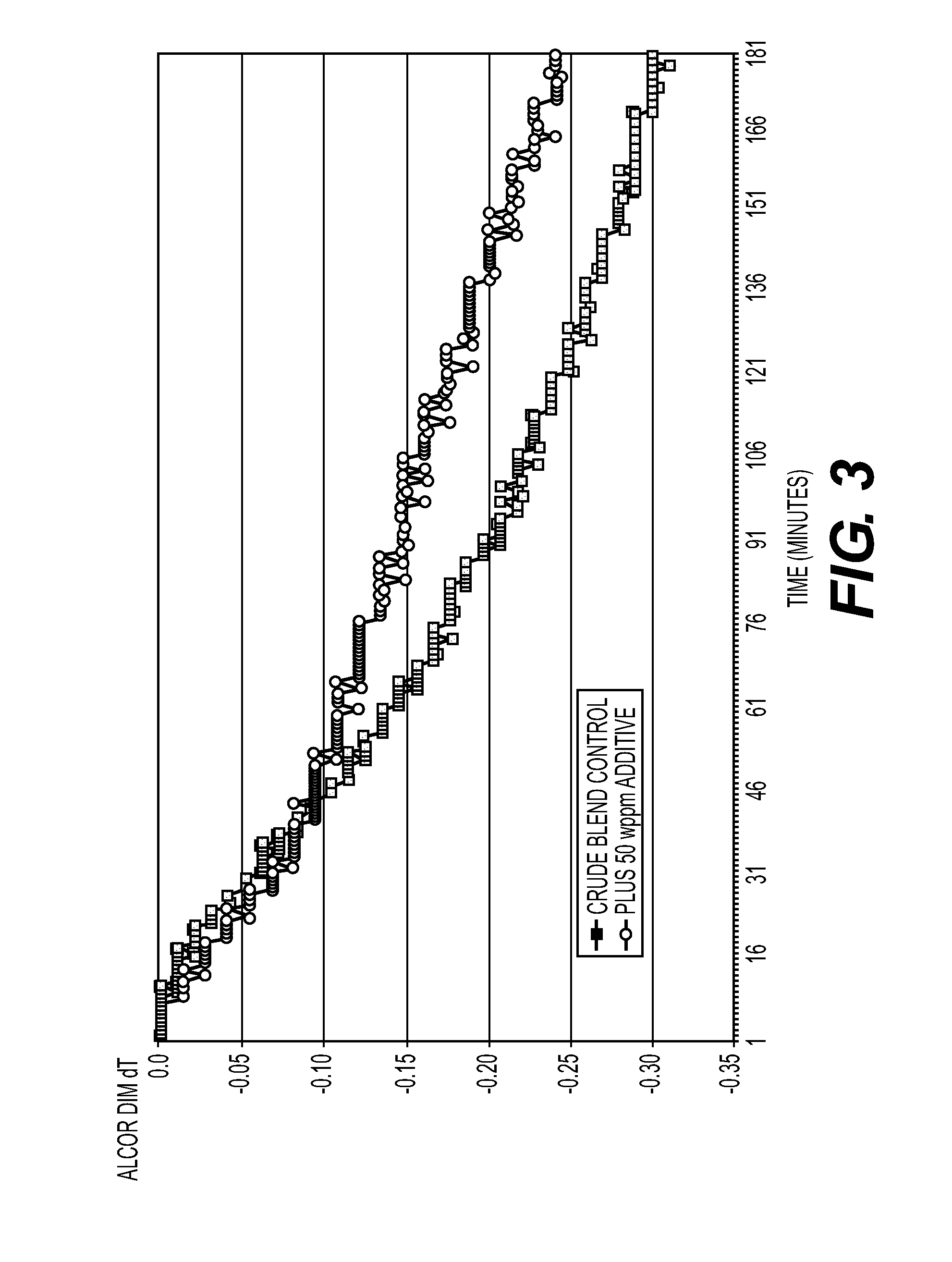Polyalkylene epoxy polyamine additives for fouling mitigation in hydrocarbon refining processes
a technology of polyamine additives and hydrocarbon refining process, which is applied in the direction of chemical refining, fuels, and thermal non-catalytic cracking, can solve the problems of increasing energy costs of petroleum refineries, affecting the thermal processing of crude oil, and affecting the efficiency of hydrocarbon refining process, so as to reduce the fouling in the hydrocarbon refining process
- Summary
- Abstract
- Description
- Claims
- Application Information
AI Technical Summary
Benefits of technology
Problems solved by technology
Method used
Image
Examples
example 1
Synthesis of an Additive of the Present Invention—PP-E-PAM
[0148]A. Epoxidation of a Vinyl Terminated PP
[0149]A1. To a solution of vinyl terminated polypropylene (Mw 1736, Mn 468, NMR averaged molecular weight 982.99, assuming one olefin unsaturation per chain) (5.00 g, 5.087 mmol) in methylene chloride (50 ml) at 0° C. was added 3-chloroperoxybenzoic acid (77% purity, 1.31 g, 5.85 mmol, 1.15 equiv.) in small portions. The resulting mixture was stirred at 0° C. for 1 hr and allowed to warm to room temperature overnight with stirring. The mixture was washed with dilute 5% aqueous sodium bisulfite, 5% aqueous sodium bicarbonate, water, brine, and dried over anhydrous magnesium sulfate, filtered, and concentrated to give a colorless oil (4.83 g, 95%) as crude product. The structure and purity of the crude product was established by 1H and 13C NMR (CDCl3, 400 and 100 MHz, respectively), which confirmed complete conversion of the vinyl group to the corresponding epoxy linkage.
[0150]A2. To...
example 2
Fouling Reduction Measured in the Alcor HLPS (Hot Liquid Process Simulator)
[0154]FIG. 2 depicts an Alcor HLPS (Hot Liquid Process Simulator) testing apparatus used to measure the impact of addition of particulates to a crude oil on fouling and the impact the addition of an additive of the present invention has on the mitigation of fouling. The testing arrangement includes a reservoir 10 containing a feed supply of crude oil. The feed supply of crude oil can contain a base crude oil containing a whole crude or a blended crude containing two or more crude oils. The feed supply is heated to a temperature of approximately 150° C. / 302° F. and then fed into a shell 11 containing a vertically oriented heated rod 12. The heated rod 12 is formed from carbon-steel (1018). The heated rod 12 simulates a tube in a heat exchanger. The heated rod 12 is electrically heated to a surface temperature of 370° C. / 698° F. or 400° C. / 752° F. and maintained at such temperature during the trial. The feed su...
PUM
| Property | Measurement | Unit |
|---|---|---|
| mole % | aaaaa | aaaaa |
| chemical shift | aaaaa | aaaaa |
| operating temperatures | aaaaa | aaaaa |
Abstract
Description
Claims
Application Information
 Login to View More
Login to View More - R&D
- Intellectual Property
- Life Sciences
- Materials
- Tech Scout
- Unparalleled Data Quality
- Higher Quality Content
- 60% Fewer Hallucinations
Browse by: Latest US Patents, China's latest patents, Technical Efficacy Thesaurus, Application Domain, Technology Topic, Popular Technical Reports.
© 2025 PatSnap. All rights reserved.Legal|Privacy policy|Modern Slavery Act Transparency Statement|Sitemap|About US| Contact US: help@patsnap.com



